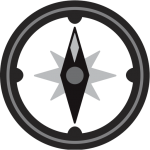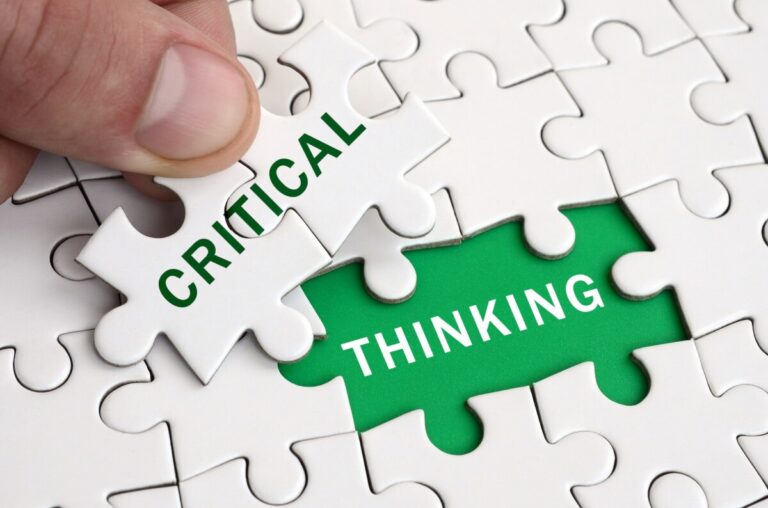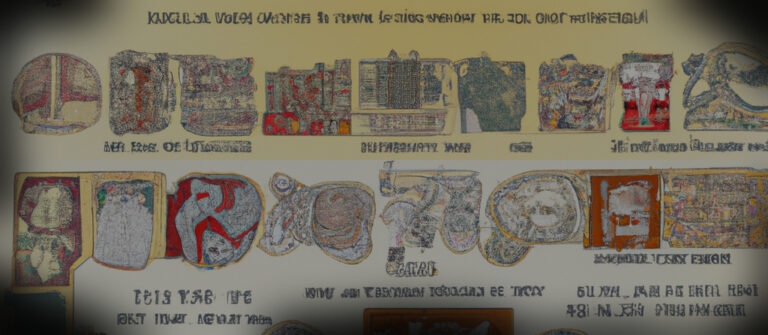Series: TST Framework > Five Thought Tools > Four Mind Traps > Three Truth Hammers
Abstract: The TST Framework is a comprehensive model designed to guide individuals through the complexities of critical thinking and decision-making. It consists of three key components: Thought Tools, Mind Traps, and Truth Hammers. Together, these elements provide a structured approach to understanding and evaluating information, fostering meaningful communication, and navigating the challenges that arise in our fast-paced world. You do not have to master this framework before using it. You’ve been practicing critical thinking your whole life and this framework is intended to purge bad habits, reinforce good habits, and introduce you to as many elements of critical thinking as you want. The Five Thought Tools help you gather, frame, and communicate accurate information, the Four Mind Traps help you stir around potholes, and the Three Truth Hammers help you short circuit the gathering of accurate information.
The TST Framework empowers you to think critically and achieve wisdom.
No one is perfect, heck, most of us are not even close to perfect most days. That’s okay. By enhancing your critical thinking skills from time-to-time, and exercising them when you can as part of your existence on Earth, you will improve your ability to think, and ultimately lead a better more fulfilling life.
To get started, or continue with it, is as easy as 5, 4, 3. Simply dig into the Five Thought Tools as best you can and whenever you can, watch out for the Four Mind Traps, and use the Three Truth Hammers. This abstraction of critical thinking simplifies the details and allows you to apply the concepts immediately, at whatever level of ability you currently have.
Ok, let’s dig into it. Although the framework is comprehensive, it breaks down as follows:
Five Thought Tools
The Five Thought Tools are the essential skills for thinking. They transform information into wisdom. Learning the Five Thought Tools equips you with the skills to think critically and analyze information effectively. They help you make more informed decisions. In essence, they are the keys to unlocking wisdom, helping you see the bigger picture.
Dig into them as best you can, but these five tools are enormous, so mastery, which is not needed for most, will take time. Focus on a top-down understanding. Meaning, get familiar with all five at a basic level, which is all that’s needed for everyday life. Over time, increase that knowledge to an intermediate level to become a really good everyday thinking. If you are or wish to become a master thinker, you need an advanced level of understanding on all five thought tools.
- Open Viewpoint Method (OVM): Includes three anchor views (true believer, empiricist, and true skeptic). It covers everything from understanding your own worldview to social factors. This tool also includes sub-skills like Systems Thinking, Empathy and Perspective-taking, Emotional Intelligence, Intellectual Humility, Critical Reading and Listening, Creativity and Lateral Thinking, Metacognition, Effective Communication, and Ethical Reasoning and Reflection. Integrated into this is the Open Viewpoint Method (OVM), a framework designed to facilitate dialogue about challenging subjects with individuals holding divergent beliefs or viewpoints.
- Idea of Ideas: Understanding research and inquiry of the empirical, rational, and irrational from speculative ideas to scientific laws.
- Reasoning: The 3 types of logic (deductive, inductive, and abductive) lie at the center of critical thinking. Super important.
- Social Constructs: Identifying social constructs, and understanding 10 core social contracts: language, names, base-10, zero, time, calendars, ownership, money, musical notation, and IQ.
- Idea Evaluation: This tool questions and validates ideas: Occam’s Razor, Socratic Method, Peer Review, Debates, and comparative analysis. Here, you learn to assess the validity and quality of ideas—whether they’re your own or someone else’s.
Four Mind Traps
Be aware of and watch out for the Four Mind Traps. They are pitfalls or mistakes in thinking. Each operates at different levels of cognitive processing, from basic understanding and application to higher-order analysis, synthesis, and evaluation. By identifying and addressing these Mind Traps, individuals can work to overcome the obstacles they present and enhance their critical thinking skills. Additionally, applying intellectual standards such as clarity, precision, accuracy, relevance, depth, breadth, and logical consistency can help individuals navigate and mitigate the impact of these Mind Traps in their thought processes.
- Logical Fallacies: Identifying logical fallacies and understanding their four core strategies: distraction, faulty choices, faulty evidence, and linguistic trickery.
- Cognitive Biases: Identifying cognitive biases and understanding 5 core biases: Confirmation Bias, Anchoring Bias, Negativity Bias, Dunning-Kruger Effect, and Recency Bias.
- Heuristics: Identifying these mental shortcuts and understanding the 3 core shortcuts: Availability, Representativeness, and Affect.
- Stereotypes: Identifying these mental biases and understanding the 4 core biases: Gender, Age, Occupational, and Ethnic.
Three Truth Hammers
If you know how to use the Three Truth Hammers as good authorities, you can save time and energy. Within the broad topics of science, law, and journalism are processes aimed at uncovering a specific truth: namely, a scientific fact or theory, a legal judgement, and the publishing of reporting, journalism, and opinion articles. Science uncovers empirical evidence and furthers our understanding of the natural world. Law establishes frameworks for justice and fairness, promoting ethical conduct and accountability. Finally, journalism fosters transparency and informs the public, empowering citizens with knowledge to make informed decisions.
- Science
- Law
- Journalism
Introduction
At the heart of our journey through the vast landscape of critical thinking lies a foundational belief: the existence of an objective reality and the pursuit of an absolute truth. While these may seem like lofty philosophical constructs, they serve as the bedrock upon which all our thinking tools, traps, and hammers rest. The quest for truth is neither trivial nor purely academic; it is a compass that directs our actions, shapes our beliefs, and defines our understanding of the world and ourselves within it.
In navigating this realm of thought, it’s essential to distinguish between concrete objects within the material world—tangible entities we can touch, see, and measure—and abstract entities, which exist as ideas and conceptual frameworks in our minds. Ideas, though intangible, have real-world consequences and play a crucial role in our perceptions and interactions. This duality brings us to the concept of the “Idea of Ideas,” an exploration into the very nature of thought itself, delving deep into how we conceive, communicate, and categorize our abstract understandings.
Imagine for a moment a vast house of cards. Each card, sturdy and tangible, represents the concrete objects of our material world. These cards form the foundation, the undeniable realities upon which we build our understanding. Stacked upon these are the more delicate layers of abstract ideas, beliefs, and cultural constructs. While they may lack physical form, their influence is undeniable, shaping our perceptions, motivations, and behaviors. Yet, like any house of cards, while the structure might appear solid, it’s supported by an intricate balance. Shift one card, and the entire structure could waver or even collapse. This is the illusory nature of “culture”—a collective understanding built upon shared beliefs, but always susceptible to change and reinterpretation.
The TST Framework is designed to guide you through this complex architecture of reality, belief, and interpretation. It offers tools to understand, critique, and construct your own house of cards, ensuring its stability and integrity while being ever mindful of its inherent vulnerabilities. As you journey through this framework, keep in mind the foundational principles introduced here, for they will serve as your guideposts and reference points, anchoring you to the ever-elusive objective reality and the pursuit of absolute truth.

Weekly Wisdom Builder
Got 4 minutes a week?
A new 4-minute thought-provoking session lands here every Sunday at 3PM, emailed on Mondays, and shared throughout the week.
Exactly what the world needs RIGHT NOW!
Commentary
The Five Thought Tools are practical applications and processes that involve the use of intellectual elements across various aspects of the Framework. They include techniques like debate, peer review, and collaborative problem-solving that facilitate constructive dialogue and informed decision-making. The intellectual elements within the Five Thought Tools are the fundamental cognitive skills and traits that form the basis of critical thinking and decision-making processes: viewpoint, understanding reality, inquiry, logic, and reviewing yourself. They are essential building blocks that help individuals navigate complex issues, evaluate information, and communicate effectively. They provide the foundation for effective critical thinking across the entire TST Framework. You can use these tools in your daily life, to overcome the challenges posed by Mind Traps, and to effectively utilize the Truth Hammers.
The Four Mind Traps are common pitfalls that can cloud judgment and distort our understanding of reality. They include Logical Fallacies, Cognitive Biases, Heuristics, and Stereotypes. By recognizing and avoiding these Mind Traps, individuals can improve their decision-making process and engage in more meaningful and truthful conversations. The Intellectual Elements and Thought Tools serve as essential resources for navigating and overcoming the challenges posed by the Four Mind Traps within the Touchstone Truth Framework.
The Three Truth Hammers are tools for evaluating the reliability and credibility of information. They include Scientific Method, Legal Trials, and Investigative Journalism. These Truth Hammers help individuals discern accurate information from misinformation and assess the validity of arguments and evidence. By applying the Intellectual Elements and utilizing Thought Tools, individuals can effectively engage with the Three Truth Hammers, ensuring a comprehensive understanding of the world around them and fostering well-informed decisions within the Touchstone Truth Framework.
Why critical thinking?
In a country where we believe so many easily proven wrong conspiracies, and theories with no or little evidence, I wish more believed in the various processes that take advantage of facts, logic, and reason. I guess I should not be surprised that so many believe the things they believe. After all, we Americans believe weird stuff!
- 80% believe in angels (182 million Americans)
- 60% believe in ghosts (200 million Americans)
- 24% believe in Astrology (80 million Americans)
- 15% believe in numerology (50 million Americans)
- 10% believe vaccines cause autism (33 million Americans)
- 7% believe the CIA killed Kennedy (23 million Americans)
- 6% believe the moon landing was faked (20 million Americans)
- 50,000 Americans follow Scientology
Applying the TST Framework
Here is how I like to think about. As I live my life, it’s kind of like, hey, I want to look at that thing. Now, for me, I think of that thing as either concrete, existing on Earth, or abstract, an idea. I also like to think of that thing using the house of cards analogy where every card is either a concrete object or an abstract idea. And, that card is also the top of either a stock of cards, solid, or is atop a house of cards, not so solid. I then think about how this card relates to any of the 5 thought cards, the 4 mind trap cards, or the 3 truth hammer cards. For example, if someone tells me, “Robert Kennedy says vaccines are bad.” I immediately go straight to the Four Mind Traps, then to Logical Fallacies, then to the Appeal to Authority logical fallacy, and reply with, “That’s super risky for you to rely on a non-scientist and known quack for anything. He is a horrible human. Stop listening to him.” Yes, harsh, but I can be that harsh with confidence because of this framework and understanding of how toxic he is to humanity.
Conclusion
The Touchstone Truth Framework offers a comprehensive approach to critical thinking that you can start applying from day one to guide and focus your efforts up to this point in your like. By framing critical thinking in terms of the Five Thought Tools, Four Mind Traps, and Three Truth Hammers, you can put new info into the appropriate bucket. By developing an understanding of each component and learning how to integrate them effectively, you can enhance your critical thinking skills and make more informed decisions in various aspects of life.
It is important to remember that critical thinking is a lifelong endeavor. By consistently applying the TST Framework to daily life whenever you can, you can continuously improve your skills, foster personal growth, and molding your worldview. With intellectual growth, you improve the quality of your inner voice, your philosopher coach–as Socrates would say.
–TST
Next >>
Series: TST Framework > Five Thought Tools > Four Mind Traps > Three Truth Hammers













